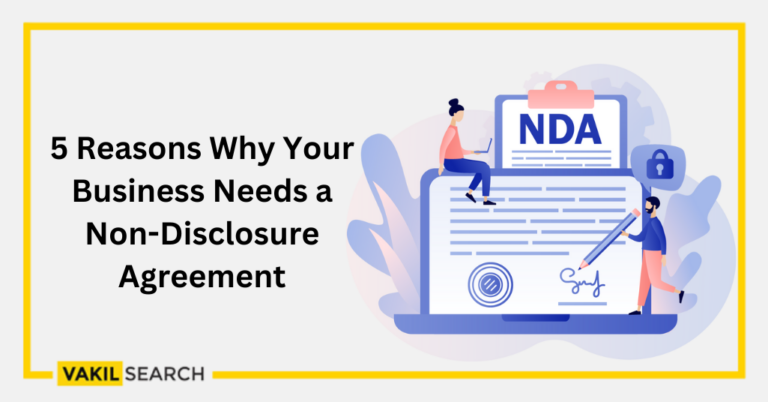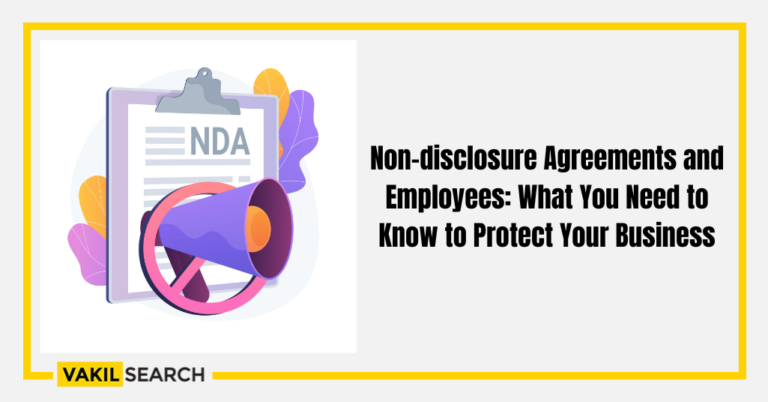Breaching a Non-Disclosure Agreement can have serious consequences. Our guide explains how to negotiate a fair agreement and protect yourself from liability
What is an NDA?
A non-disclosure agreement (NDA) is a contract between two or more parties that protects confidential information. It ensures that sensitive or private information is not shared with anyone who shouldn’t know about it. NDAs are commonly used in business deals, partnerships, and employment agreements to keep important information safe.
The Working of an NDA Involves the Following Aspects
Parties involved:
A Non-Disclosure Agreement typically involves two parties, the disclosing party, and the receiving party. The disclosing party is the entity or individual that possesses confidential information, while the receiving party is the entity or individual who will have access to the confidential information.
Definition of confidential information:
The Non-Disclosure Agreement clearly defines what constitutes confidential information. This can include trade secrets, business plans, financial information, customer data, technical specifications, and other proprietary knowledge.
Obligations of the receiving party:
The NDA explains what the receiving party should do with the confidential information. They need to keep it secret, only allow authorized people to access it, and not share or use it for anything other than what they agreed to do.
Duration of the agreement:
The Non-Disclosure Agreement specifies the duration for which the agreement remains in effect. It may be for a specific period of time or continue indefinitely, depending on the nature of the confidential information and the needs of the parties involved.
Types of NDAs
Unilateral NDA:
This is the most common type of Non-Disclosure Agreement, where only one party discloses confidential information to another party. It is often used in employment contracts or when a company shares its trade secrets with a potential investor or business partner.
Mutual NDA:
In a mutual NDA, both parties exchange confidential information with each other. This type of agreement is commonly used when two companies or individuals are considering a collaborative effort, such as a joint venture or research partnership.
What Information Will an NDA Protect?
An NDA can protect a wide range of information that is considered confidential. This can include, but is not limited to:
Trade secrets:
Unique manufacturing processes, formulas, or techniques that provide a competitive advantage to a business.
Intellectual property:
Patents, copyrights, trademarks, and other forms of protected creative work.
Business plans and strategies:
Confidential strategies, marketing plans, financial projections, or expansion plans that are not publicly available.
Customer and client data:
Personal information, purchase history, and other details related to customers or clients are shared in the course of business.
Technical information:
Designs, blueprints, software code, algorithms, or technical specifications that are proprietary in nature.
Advantages and Disadvantages of Having an NDA
Advantages of an NDA:
Protection of sensitive information:
An NDA helps prevent unauthorised use or disclosure of confidential information, protecting a company’s competitive advantage.
Establishing trust:
Signing a Non-Disclosure Agreement shows a commitment to keeping sensitive information confidential, and building trust in business relationships.
Legal recourse:
If the NDA is breached, the injured party can take legal action to seek damages or stop further disclosure.
Disadvantages of an NDA:
Limited enforceability:
Enforcing an NDA can be challenging, especially across different countries with varying laws.
Cost and complexity:
Drafting and negotiating an NDA can involve legal expenses and complexities, especially in complex business arrangements.
Potential limitations:
NDAs may not cover all situations or information types, and there may be exceptions or limitations to what can be protected. Publicly available information may not be covered.
FAQ:
What is a non-disclosure agreement (NDA) and why is it important?
A non-disclosure agreement is a special contract that keeps secret information safe. It is important because it protects sensitive information and makes sure that everyone can trust each other in business.
What are the key elements or clauses typically found in an NDA?
Key elements of an NDA include: 1. The definition of confidential information 2. Obligations of the receiving party 3. Duration of the agreement 4. Remedies for breach, and any additional provisions specific to the situation.
What types of information are usually protected under an NDA?
Information protected under an NDA can include: 1. Trade secrets 2. Intellectual property 3. Business strategies 4. Customer data, and technical information, among other confidential and proprietary knowledge.
What are the potential risks or consequences of breaching an NDA?
Breaching an NDA can lead to legal consequences, including lawsuits, financial damages, and injunctions. It can also damage the breaching party's reputation and harm business relationships.
Are there any limitations or exceptions to what an NDA can cover?
Read more










